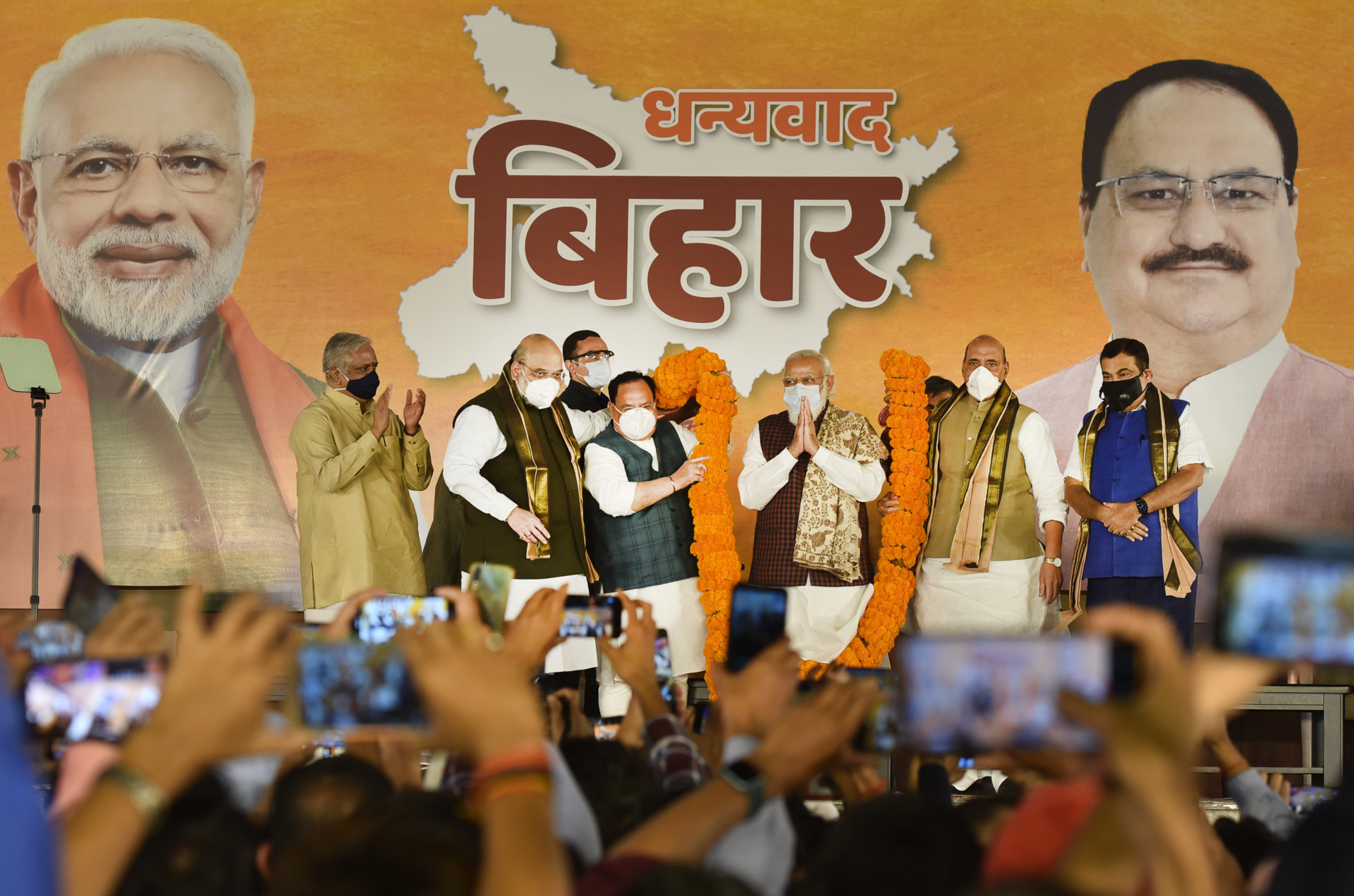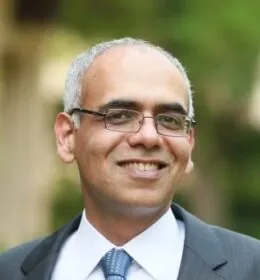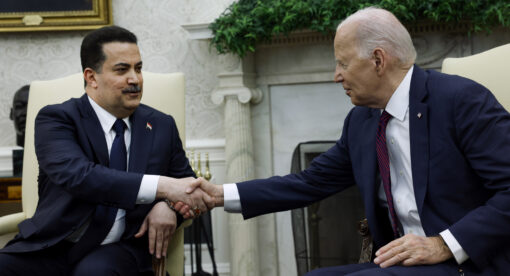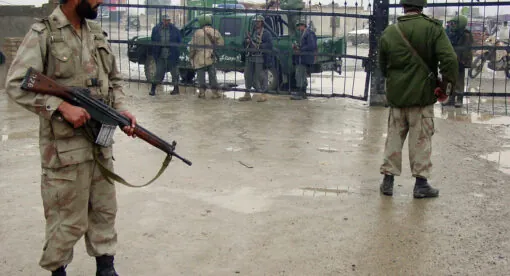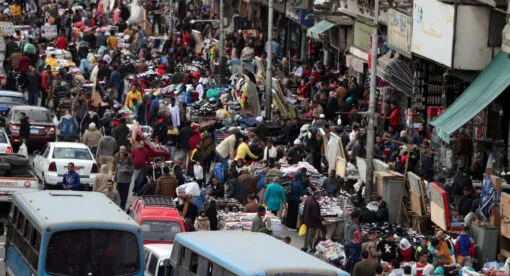The promotion of democratic values in nuclearized South Asia, which is home to a quarter of the world’s population, is important to U.S. national interests. Rather than being distracted by short-term strategic gains, U.S. policymakers would do well to focus on an impartial, human-centric, and regional approach to promoting democracy there. Such an approach would give the United States’ efforts more legitimacy and relevance at a time when authoritarianism is on the rise in the largest countries in this part of the world. More than just serving U.S. interests, the promotion of democracy in South Asia would enable countries in this region to better address poverty, political violence, climate change, and other challenges.
In furtherance of his stated goal to revitalize democracy at home and abroad, President Joe Biden just hosted the first of two Summits for Democracy (on Dec. 9 and 10). This summit virtually brought together more than a hundred world leaders, civil society, and private sector representatives to contend with the disturbing rise of political polarization and intolerance around the world. The White House invited India, Maldives, Nepal, and Pakistan to the summit. Bangladesh and Sri Lanka were not invited, which caused significant consternation within these countries. Pakistan declined its invitation, presumably due to its own deteriorating relationship with the U.S. as well as to express solidarity with China, which also did not receive an invite to this summit.
The exclusion of the second-, third-, and fourth-largest South Asian countries from the democracy summit will undermine U.S. efforts to position itself as an unbiased proponent of democratic values in the region via this high-profile moot. Yet, under a new assistant secretary of state, the Bureau of South and Central Asia is rethinking America’s future engagements with countries located in this strategically vital region. The U.S. thus still has a chance to articulate a nuanced and evenhanded approach to democratic enabling across South Asia as a whole.

Roots of South Asia’s Democratic Deficiencies
On the surface, the four largest countries in South Asia seem to have followed distinct political trajectories since their independence. However, the underlying democratic deficiencies within these countries have many important common characteristics. Sri Lanka is South Asia’s oldest democracy (universal franchise was introduced in 1931), and India is the largest one, not only in the region, but the world due to the size of its population. Yet both countries have experienced authoritarian rule, and both countries continue promoting a mutated version of democracy, aptly described as “ethno-religious majoritarianism.” Bangladesh separated from Pakistan in 1971, fueled by a sense of ethnic disgruntlement against the hegemonic western wing of the country that superseded the desire for Muslims of the Subcontinent to form one nation. While Bangladesh has flirted with military rule, the military has had a much longer stint in Pakistan, having ruled the country for over three decades. The Pakistani military’s scope of influence now goes beyond providing defense to determining foreign policies and preserving its own corporate interests.
While South Asian leaders readily espouse the rhetoric of promoting egalitarianism and democratic values, all major countries in the region are ruled by governments with authoritarian tendencies that use systems of patronage from elites to stay in power. These similarities are partially a result of the common colonial legacy of using divide-and-rule policies to subdue challenges and providing patronage to local elites to enable labor and raw material extraction. Post-colonial states in the region also readily relied on “over-developed” state institutions for the process of nation building. Despite flirting with economically progressive ideals, South Asian political elites opted for a controlled form of democracy that considers politics less as a participatory and inclusive process than as something to be steered and manipulated from above.
Emergent Indicators of South Asian Authoritarianism
Bangladesh, India, Pakistan, and Sri Lanka are all struggling with authoritarian tendencies today, even if the evident manifestations of authoritarianism vary from country to country.
In Bangladesh, the political sphere has been dominated by two ruling dynasties with intermittent periods of military rule. The Awami League has had a near chokehold on domestic politics since 2009 and has subverted the judiciary and the security apparatus to undermine political opponents.
While India shook off the dynastic rule by the Congress party, Hindu majoritarianism and a growing intolerance toward the country’s large Muslim minority is increasingly dominating India’s socio-economic and political imagination.
Sri Lanka’s Rajapaksa brothers, who brutally crushed the militant Liberation Tamil Tigers of Eelam in 2009, have returned to power. Their comeback on the heels of the 2019 Easter bombings in the country has given second wind to ethno-nationalist Sinhalese Buddhists, whose range of targets for persecution has widened from Tamil Hindus and Christians to include Muslims in the country.
While a third consecutive democratically elected government seems poised to complete its term in Pakistan, the military continues exercising immense influence on the country’s foreign and domestic policies. The incumbent Pakistan Tehrik-e Insaaf party had promised to change the status quo of elitism and nepotism, but it, too, relies on powerful political families to stay in power. As a result, a vast majority of people in the country feel that none of their politicians and political parties care for ordinary citizens.
Authoritarian governments within these four largest South Asian states have repeatedly used the rhetoric of national security and national interest to curb freedom of expression and political opposition. Human rights groups also point to the highly repressive state response to demand for more representation by different ethnic, political, and religious groups, be it the Tamils in Sri Lanka, the Baloch in Pakistan, the Hindus or Jamaat-i-Islami adherents in Bangladesh, or the Sikhs or Naxalites in India.
The International Dimension to South Asia’s Challenges
The repressive tactics that ruling South Asian governments are using to quash internal dissent and to constrain space for human rights and freedom of expression are readily noted by entities like Freedom House. In its 2021 ranking, for instance, Bangladesh, Pakistan, and Sri Lanka were categorized as being “partially free,” whereas India’s status was downgraded from “free” to “partially free” due to the apparent deterioration of political and civil liberties in the country. However, such indices do not consider the problematic role of U.S. foreign policies in undermining democratic progress within South Asia. Consider, for instance, how the U.S. provided invaluable support to military regimes, especially in Pakistan, first to help defeat the Soviets in the 1980s and then to support U.S. intervention in Afghanistan after 9/11.

Moreover, the U.S.-led “global war on terrorism” over the past two decades has been used as an excuse to justify problematic domestic policies across South Asia. For example, Sheikh Hasina’s government in Bangladesh used post-9/11 rhetoric to persecute political opponents, especially Jamaat-i-Islami. India used the label of “Islamist terrorism” to suppress and discredit demands for Kashmiri autonomy. In Sri Lanka, the Rajapaksa government also used terrorism as a reason to discredit the broader demand for Tamil autonomy in addition to using brutal tactics to defeat the Tamil Tigers in 2009.
The U.S. International Commission on International Religious Freedom, or USCIRF, has noted the increase of extremist violence in Bangladesh, and it has just released an update highlighting ethno-religious tensions in Sri Lanka. Pakistan has remained among a dozen or so “countries of particular concern” for some years now, due to its blasphemy and anti-Ahmadiyya laws and the forced conversions of religious minorities.
When it comes to India, however, the U.S. is accused of refraining from criticizing Prime Minister Narendra Modi’s government due to its own strategic interests. For years, Modi was persona non grata in the U.S. for his alleged role in the Gujarat massacre in 2002 while he was chief minister of that state. Yet since he became prime minister in 2014, Modi has repeatedly been welcomed as a celebrated leader across the Western world, including at the White House. For two years in a row, USCIRF has recommended that the State Department place India on the list of countries of particular concern, yet the State Department has not complied with this recommendation. This evident reluctance causes much consternation within Pakistan, and it allows Pakistan’s government to dismiss its own problematic designation as being inaccurate.

The U.S. also needs to recognize its own role in creating other problems plaguing South Asia. The elite capture of resources, for instance, which remains a persistent cause for internal strife, has been worsened by U.S.-endorsed economic reforms. In the past, for instance, the U.S. promoted adoption of the “Green Revolution” in agriculture, which relied on capital-intensive farming to boost productivity and earn more export revenues. While such efforts did significantly increase yields, the benefits of increased productivity did not percolate to poorer and landless farmers of the region. Moreover, the increased reliance on intensive chemical farming also incurred significant ecological costs. Subsequent reliance on neoliberal policies promoted by U.S.-backed lending agencies, like the World Bank and the International Monetary Fund, might have enabled India and Bangladesh to gradually increase economic growth, but they have done little to make this growth inclusive.
The economic downturn unleashed by the COVID-19 pandemic will continue to make things more difficult for already vulnerable segments of society across South Asia for years to come. The international community has used the COVAX initiative to provide vaccines to the region, alongside ongoing Chinese vaccine diplomacy. Yet the reluctance of powerful countries like the U.S. to relax intellectual property rights of big pharmaceutical corporations to improve vaccine access has slowed immunization coverage. The pandemic has also seen increased repression of dissent in the name of curbing the spread of the virus in Sri Lanka, where political activists and civil society representatives are being arrested for protesting high-handed policies of the Rajapaksa regime. In India, the pandemic has provided an excuse to blame the already beleaguered Muslim minority for spreading the virus and to prevent widespread protests against the government.
While the onus of adopting certain state behaviors lies on the national governments themselves, the U.S. can, and does, have a significant role to play within the wider region. U.S. policymakers would do well to reflect on lessons learned from Washington’s longstanding engagements with the region and begin to prioritize promotion of broader, people-centric goals, including the promotion of democracy, over the pursuit of more narrowly defined strategic interests.
Taking a Human-centric Approach
To promote principles like freedom, the U.S. needs to transcend the conventional notion of security and focus instead on promoting human security in South Asia. This implies giving primacy to the security of ordinary citizens in this region rather than aligning with specific states and bolstering their capabilities to further the U.S.’s own strategic interests. Instead, the current U.S. approach toward South Asia seems dominated by the need to contain China, which has led to a ramping up of U.S. engagements with India. Conversely, the bilateral relationship between the U.S. and Pakistan remains confined to the pursuit of narrow counterterrorism goals.
There is also growing U.S. wariness of Pakistan’s ever-closer ties with China, including the China Pakistan Economic Corridor, which has become a flagship project of the more ambitious Belt and Road Initiative. The U.S., along with other G7 countries, is planning to formally launch the Build Back Better World initiative next year to provide higher quality and more sustainable infrastructure options for resource-constrained countries. Whether the Build Back Better World will offer more viable options and be able to effectively compete with ongoing Belt and Road investments in South Asia remains to be seen. Thus far, however, limited bandwidth has been allocated to trying to offer Pakistan a viable alternative to increasing reliance on China.

Beyond trying to push back against China’s “string of pearls” doctrine, the steady erosion of democratic values in Sri Lanka and Bangladesh has also failed to evoke adequate attention within the U.S. Meanwhile, oppression continues to plague the Tamils, and the Sinhalese Buddhists have begun targeting Hindus and Muslims in Sri Lanka. Similarly, political opponents in Bangladesh still face immense pressure and persecution under the Hasina government, which is also making problematic accommodations to hardline Islamists to retain power.
While the U.S. does remain concerned about the need to avert a catastrophic nuclear conflict in South Asia, the ways in which it has been extending military cooperation with India may escalate the ongoing arms race in the region, in which India tries to counterbalance China and Pakistan tries to catch up to India, with Chinese backing. Recent remarks made by Deputy Secretary of State Wendy Sherman, which brushed aside any hopes for the U.S. to strike a balance between its relationships with India and Pakistan, may compel Islamabad to move closer to China – something that will not bode well for the Pakistani civil-military imbalance.
The U.S.’s reluctance to abandon a conventional view of security in South Asia, alongside the great-power conflict with China, may turn the region into an arena for a Cold War II. At the very least, security-dominated U.S. foreign policy engagements with South Asia will undermine prospects for regional integration and collaboration concerning shared environmental challenges, such as inter-regional water sharing.
The U.S. had helped broker, via the World Bank, the longstanding Indus Water Treaty between India and Pakistan in 1960. While the treaty has withstood the recurrent eruption of hostilities between the neighboring rival states, it is coming under increasing pressure due to population growth and the impending Himalayan glacial melt. Moreover, Himalayan water resource management extends beyond India and Pakistan alone; much of the fresh water flowing into India comes from Chinese-controlled Tibet. In turn, India is an upper riparian country for both Pakistan and Bangladesh.
The U.S. has a long history of engagement with South Asia, and it still enjoys immense influence with all the states in the region. The U.S. can pressure South Asian countries to improve their human rights and governance records, but this must be done in a manner that minimizes perceptions of partiality. An impartial assessment of minority rights or the growing democratic deficiencies in South Asia would lessen the chances of genuine human rights concerns being discredited or being labeled as a coercive tool that allegedly targets individual nations as a tactic to ensure compliance with U.S. foreign policy objectives.
Ultimately, the pursuit of strategic stability in South Asia would be better served by promoting democratic values and human rights across the region. Narrowly defined or short-term strategic gains must not be allowed to override the imperative of fostering more representative governance and promoting human-centric security, which not only helps improve the lives of ordinary citizens but also helps alleviate fraught relations between its neighboring states.
Dr. Syed Mohammed Ali is a professor of anthropology, international development, and human security courses at Johns Hopkins, Georgetown, and George Washington universities. Dr. Ali has two decades of experience working on major international development challenges including governance problems, issues of marginalization, and natural and man-made disasters. Ali is the author of Development, Poverty and Power in Pakistan: The Impact of State and Donor Interventions on Farmers (Routledge, 2015).
The views expressed in this article are those of the author and not reflective of an official policy or position of the New Lines Institute.

